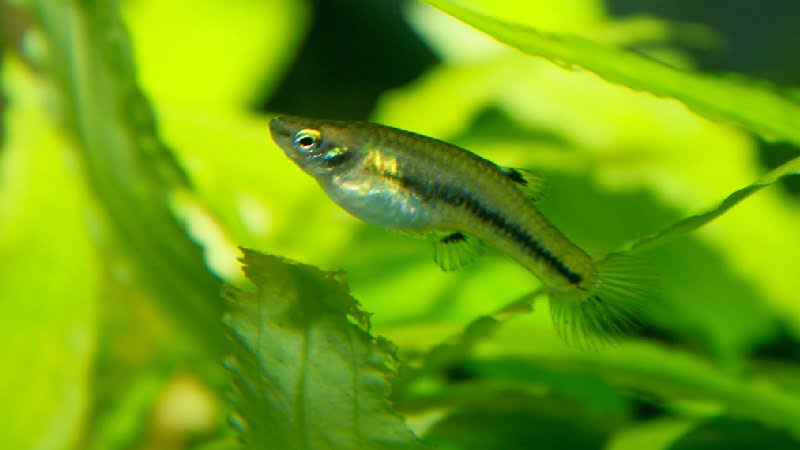If you’re new to the world of keeping fish as pets, you may be wondering what kinds of fish are best for beginners. Many people recommend killifish and guppies, as they are relatively easy to care for and can be pretty hardy. In this guide, we’ll show you how to keep your killifish and guppies alive and healthy, so you can enjoy them for years to come.
Are Killifish And Guppies The Same?
Though they may look similar, killifish and guppies are two very different types of fish. While they are both small and brightly colored, killifish are actually a type of freshwater fish, while guppies are saltwater fish. While they can both be kept as pets, they have different care requirements. Here is a closer look at the differences between these two popular fish.
Diets
Guppies are tropical fish that eat a variety of different kinds of things. Their long-term survival depends on a steady supply of living food, including plants and algae. Killifish, on the other hand, are carnivorous aquatic creatures. They have a strong aversion to plants, which may be disastrous when paired with a tranquil and friendly fish such as a guppie. Guppies two times their size have been eaten by killifish in the past.
Size Difference
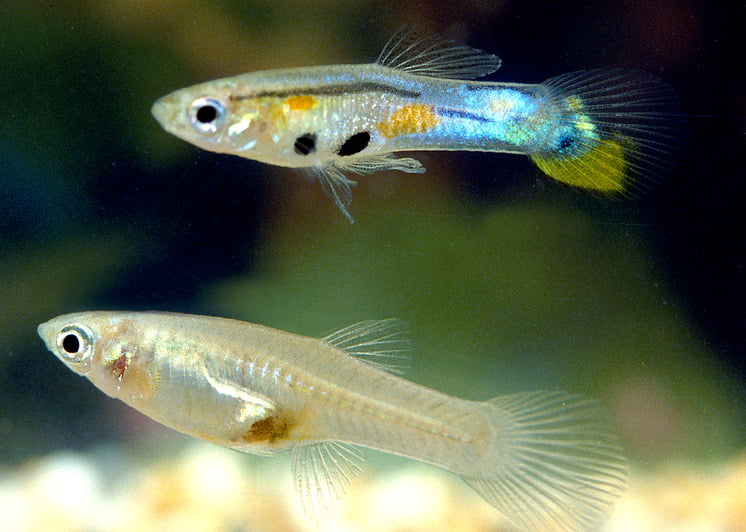
Killifish can be classified into multiple families, such as Aplocheilidae, Fundulidae, Valencia, etc. In total, there are more than 1,200 varieties of killifish, each with distinctive characteristics. Guppies can only grow to a maximum of 2.5 inches, while killifish can grow to a maximum of 4 inches. As a result, guppies will quickly become prey, fighting carnivorous fish species twice as large as they are.
Territorial Behavior
Male guppies will exhibit territorial behavior, but only limitedly and only in tanks with overcrowded conditions. In contrast, killifish exhibit these behaviors at a tenfold level. In both their interactions with one another and with other species, killifish males are known to be highly territorial and aggressive. When you have more than three killifish males in a mixed tank, this can quickly turn into a disaster.
Requirements For Tanks
In general, one fish per two gallons of water is the recommended tank size for guppies. Guppies should not be housed in tanks larger than 20 gallons. For killifish, the rules are different. Their official recommendation for 20-gallon tanks is one pair. If you have a 20-gallon tank, you should ideally only keep two killifish. To avoid overcrowding and lower the risk of aggression, you should get at least a 40 or 50-gallon tank if you want to add guppies.
Will Guppies And Killifish Fight?
They don’t usually, although they do on occasion. It all relies on various things, including the species’ hostility, tank conditions, and the size differential between the two. Killifish have a lesser likelihood of attacking guppies if they are of comparable size to each other. If the killifish aren’t getting enough to eat, it’s possible.
However, when it comes to guppy fry, things are somewhat different. As soon as the fry hatch, your killifish will eat them. I recommend putting the pregnant female guppy into a new aquarium when she goes into delivery.
Killifish, however, is unlikely to be consumed by your guppies. These two fish are around the same size. Hence guppies are more likely to prey on smaller fish. Guppies will, however, eat killifish fry because they are so young and are unable to defend themselves.
Because guppies don’t usually display predatory behavior, they have little interest in any fish species other than their own. Their usual omnivorous diets are OK with them as long as they have enough to eat all day.
What To Do If Killifish And Guppies Live Together?
While killifish and guppies can certainly live together, you should do a few things to ensure their cohabitation is successful. Here are a few pointers:
Provide Enough Space
As I mentioned previously, the water requirement for each killifish is at least 10 gallons. You should keep track of your killifish’s needs when choosing a tank since guppies require less water volume. It might be possible to minimize killifish aggression if you create enough room for both species.
Keep Killifish Males Under Control
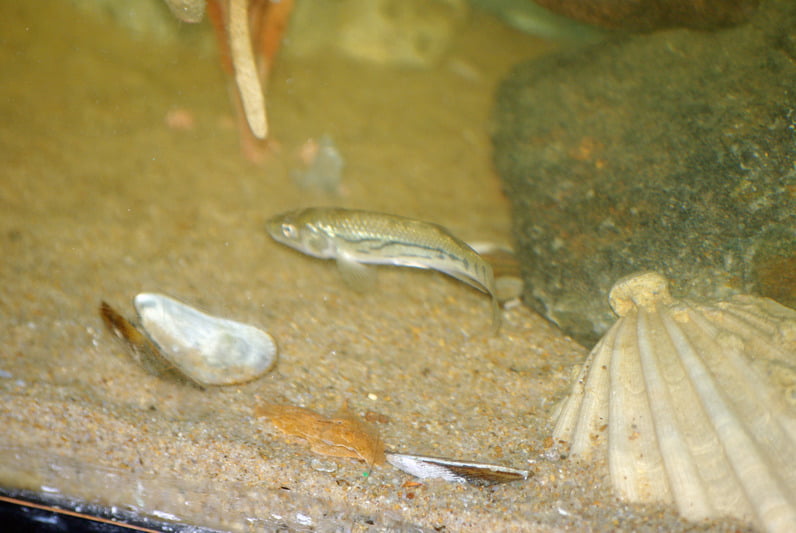
Male Killifish are more territorial and violent than females. Only having female killifish is the ideal option, as this will help maintain a more stable tank environment in the long run. On the other hand, having more females will increase the quantity of fry to be expected throughout the breeding season. I believe you can live with the latter. Therefore I recommend that you concentrate on the former.
Maintain An Adequate Diet For Your Killifish
In addition to eating insects and worms, the killifish also consumes arthropods as part of its carnivorous diet. Ample food will diminish the fish’s appetite for killing. You should ensure the killifish are fed daily enough live food and separate them from the guppies if possible. You can choose from a variety of homemade and store-bought fish food options. If you have the time and patience to do so, you could even have homemade live cultures of different arthropods and worms.
Be Careful When Selecting The Killifish Species
There are around 1,270 different types of killifish to pick from, each with its own personality traits. Different species have different levels of aggressiveness and territoriality, and some are larger and more intimidating than others. Killifish that looks like your guppies might be a good choice. Use a smaller type of killifish with a mellower disposition to keep things quiet in the aquarium.
Other Wonderful Killifish Tank Mates
Tetras
Tetras and Killifish are excellent tankmates since they complement each other so well. They come from various places around the globe, yet they have the same biological niche: little micro predators of tiny invertebrates.
Tetras and Killifish are both incredibly colorful fish, and Tetras, in particular, have some of the most immediately recognized species in the hobby. Neon, Cardinal, Black Skirt, and Diamond Tetras are just a few of the species that get along well with lesser Killifish.
Like West African and South American Killies, wild-caught Tetras like soft, acidic environments, tank-bred species of any family, on the other hand, perform well in a wide variety of water chemistries.
Corydoras
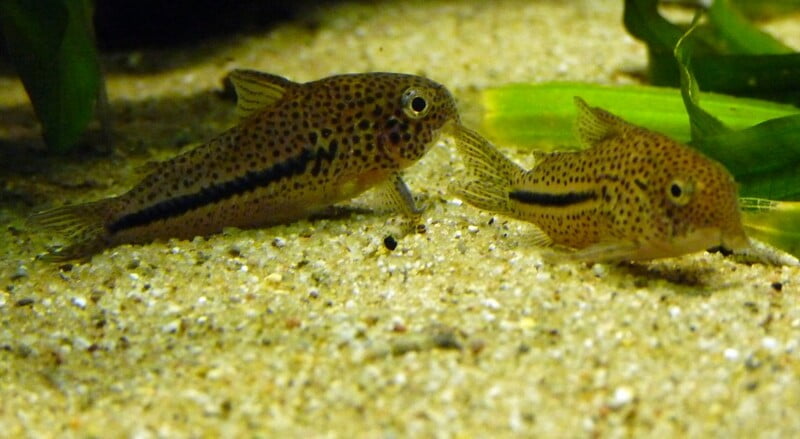
Killifish get along fine with most catfish, but Plecos and other sluggish types of fish are nothing like charming. The goofy, continually active Corydoras are more appealing than functional!
Natives of South America prefer to be kept in groups of their kind; the more, the merrier! A corydoras rolls her eyes, speeds up to the surface to drink the air and digs in the substrate in pursuit of flakes, invertebrates, and other treats.
When competing with Killies and other active types, Cories do not always get their fair share at the surface. They should be fed a diet of high-quality sinking pellets with protein. Additionally, corydoras are entirely peaceful and relatively easy to breed, especially when kept in planted aquariums.
Black Ghost Knifefish
If you’re maintaining very big Killifish, such as Blue Gularis, the Black Ghost Knifefish makes an excellent bottom dweller. They are some of the strangest fish in the trade; although timid, they can be highly irritable if a tank mate attempts to push them out of their preferred hiding area.
Ghost Knifefish are similarly electrically weak. While they cannot electrocute prey, they can detect the presence of worms and tiny fish in full darkness or while buried in the substrate. They also converse with one another using their electrical abilities.
Give them a tubular, totally contained chamber to help protect them from the electrical impulses of their tank mates.
Barbs
Barbs are a diverse group of well-known aquarium fish that have been around for decades. Barbs are a robust, schooling fish that is easy to breed and much simpler to feed. The vast majority are omnivorous, enjoying a broad range of plant and animal-based diets.
Barbs may be aggressive with sluggish and/or long-finned tankmates such as Bettas. On the other hand, Large Killifish is a little snappy themselves and gets along swimmingly with them.
Except for the smallest species, such as Cherry Barbs, which the larger Killifish may devour, all species make ideal tank mates. The Tiger, Black Ruby, and Rosy Barb are the most acceptable of the regularly accessible species, in my opinion.
Glass Catfish
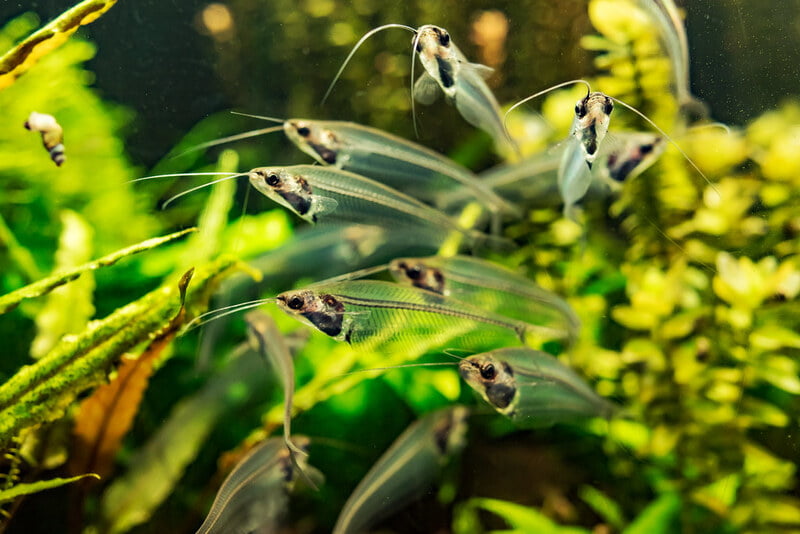
Glass Catfish is another fish with a long body and strange colors. You can only find these in Thailand, and they are transparent. Their schooling habits enable them to better escape predators in the weed-choked waters where they live.
Although Glass Catfish are predators, they are also prey. If their tank mates are small enough, they will quickly eat them – Tetras, Guppies, and nano Killies are easy targets. However, any fish longer than 2 inches is safe.
Dwarf Cichlids
It’s hard to define a Dwarf Cichlid since there are numerous little Cichlids that don’t acquire the moniker. However, Convicts seldom exceed 4 inches and are not considered dwarf cichlids.
Dwarf Cichlids include Apistogramma and Kribensis from West Africa and South America. They are Cichlids, mild-mannered Cichlids. They will claim a territory, protect it against their own species, and reproduce aggressively.
If your tank is 20+ gallons, your Killifish will be safe from Dwarf Cichlids. To improve their colors and prepare them for breeding, feed them frozen and live items like bloodworms and tubifex.
Bee Shrimp
Bee Shrimp (also known as Crystal Red/Black) is a popular shrimp-only tank species in the hobby. They are not only tiny but also delicate, requiring soft water with a low nutritional load and tranquil tank mates.
On the other hand, smaller Killifish, such as Ricefish and Lampeyes, are an ideal complement for these tiny crustaceans. Bee Shrimp is significantly more colorful than the bigger, tougher Cherry and Amano Shrimp. If you manage to breed them successfully, there is also a very significant market for the young!
Video: Guppies and Killifish Living In A Tank
FAQs
Do golden wonder killifish mix well with guppies?
Eventually, the killifish swallowed the entire thing. As long as there are no other torpedo-shaped fish near the surface, these fish are a great addition to a community tank.
Can clown killifish live with guppies?
In the same tank, guppies and clown killifish should get along fine. During its full growth, the guppy and clown killifish are around the same size, so the clown killifish shouldn’t try to eat it. Guppies’ fry is, however, susceptible to clown killifishes.
Will killifish eat neon tetras?
Both neon tetras and killifish are highly compatible tank mates because their colors and lively personalities make them extremely attractive together.
In Summary
If you’re looking to keep killifish and guppies together, there are a few things you should keep in mind. For one, killifish are a burrowing species, so you’ll need to ensure that your tank can accommodate this. Additionally, it’s essential to ensure that the fish are happy with each other’s company before putting them in the same space.
References:
- https://magicians-quest.fandom.com/wiki/Killifish
- https://www.gov.nl.ca/ffa/wildlife/all-species/animals/inland-fish/banded-killifish/

Annette M. Chaney is an experienced marine biologist with over 20 years of experience as an aquarist and fishkeeper. She started her first aquarium at a young age, filling it with frogs and goldfish obtained from the ten-cent pet store.
Annette grew up caring for and breeding African Cichlids, which led to a hobby in high school that doubled as a profitable means. Attending Reed College gave her time to solidify herself as an accomplished aquarium caretaker with an eye for sales. After that, from 2009 – 2013, she studied at Roger Williams University – one of the most prestigious universities for Aquaculture and Aquarium in USA. She is the founder of AquariumCircle since 2010.
